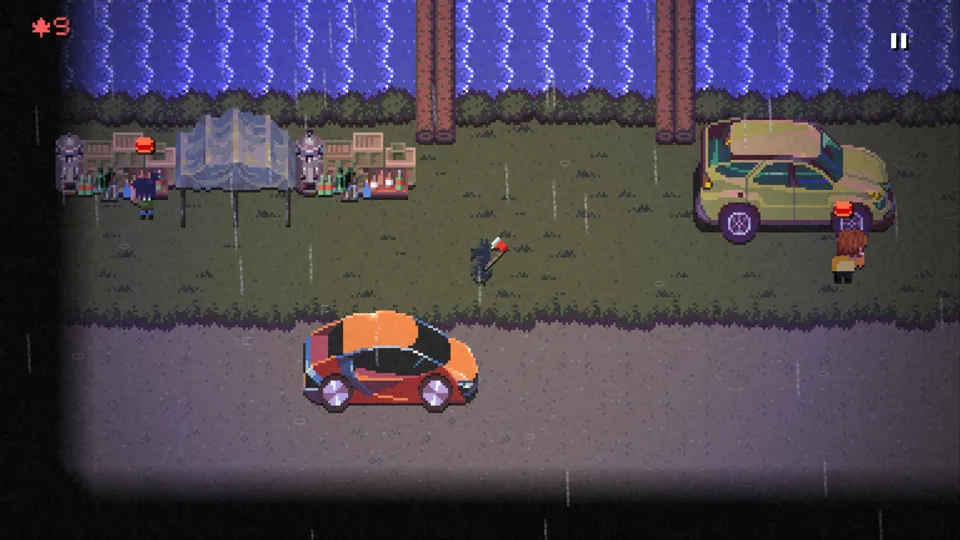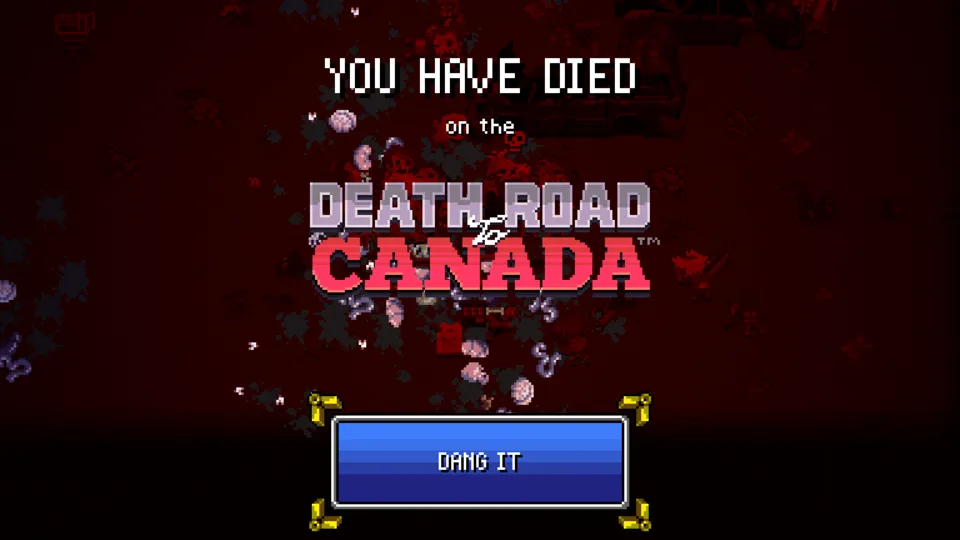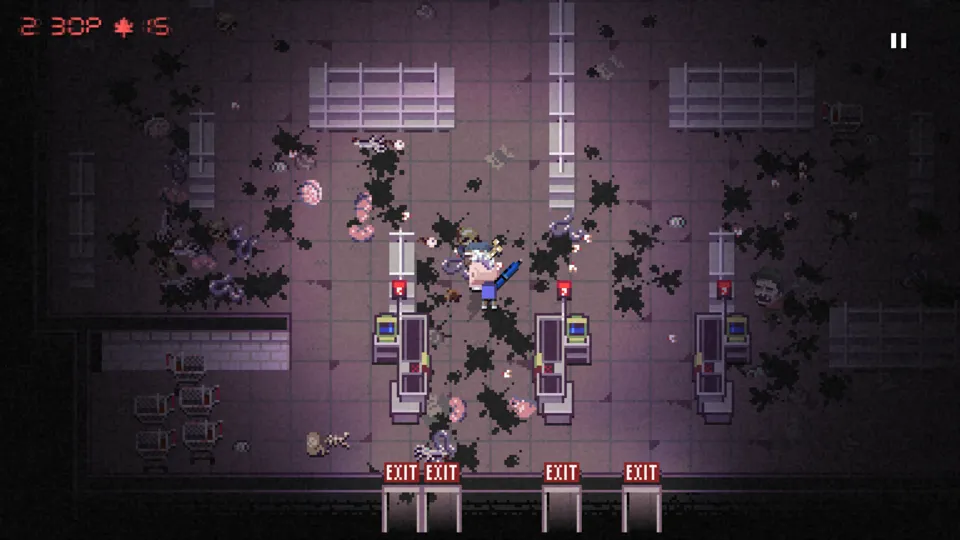Death Road To Canada
There is no end to the zombie games in my library, I swear. What is this, 2004? How gauche.
 This is Rico, and Rico is a champion.
This is Rico, and Rico is a champion.
The difference between Death Road to Canada and the vast horde of other zombie games in my library, however, is that Death Road to Canada knows it is no longer 2004, and knows that the appropriate response to the apocalypse is to be as silly as possible. It’s this ethos of silliness and absurdity that ungirds everything Death Road to Canada is and does, and the attitude it hopes its players have as well.
For what it’s worth, it’s by and large successful. I had an excellent time with the game, even if I did die more often than I wanted to.
 >.>
>.>
Death Road to Canada doesn’t particularly care about the hows and whys of the zombie apocalypse, only that the apocalypse has come, and Justin Trudeau represents the salvation of all humanity. Our intrepid heroes choose to leave what, frankly, looks like a perfectly ordinary day in Florida and make the long trek north into Trudeau’s waiting embrace.
It is a very silly game.
As the premise suggests, Death Road to Canada is a clear homage to Oregon Trail, and does a surprisingly good job of capturing why Oregon Trail is so fondly remembered. While resource management is a key element of the game, it is the small dramas that happen over the course of the journey that define how the trip is going and how it will be remembered. Small narratives play out as the car rumbles down the road, with excursions to scavenge for supplies providing further fun drama. Though the zombies move slowly, the combination of weapon degradation, fatigue, and the sheer number of zombies mean any fight becomes exciting, with retreat sometimes being the best way out of a bad decision.
 Does this mean Trudeau-senpai has abandoned me?
Does this mean Trudeau-senpai has abandoned me?
However, the best element of Death Road to Canada is also perhaps its most poorly implemented. Like many trail games, Death Road to Canada includes companions, with the option for these to be controlled by multiple human players. That these can be controlled by humans is a great addition, as their native AI is abysmal. I generally just had companions tagging behind me like particularly kleptomaniacal shadows rather than fighting the zombie horde advancing towards us, and so enjoyed my time playing with my friends much more.
The implementation of the multiplayer, though, feels incomplete. All multiplayer must be done through a shared keyboard, which is not, in and of itself a problem. However, rather than each player being able to move and interact with the world independently, their view is limited to what the first player sees. They are unable to open doors or move through the space fully, making them feel, once again, a bit more like shadows than full players in and of themselves. Getting the multiplayer to work at all is also a bit of a headache, with players having to go through multiple unintuitive menus (it is, for the record, pressing the button you have play/pause key, then having each player select a character). It’s frustrating, and feels incomplete, but is still a fun enough experience to be worth the headache.
 I am alone in a grocery store with my umbrella and neither care nor thought in this be-mohawked head.
I am alone in a grocery store with my umbrella and neither care nor thought in this be-mohawked head.
In the end, that idea that it’s worth the headache is a fair summation of the game itself. It’s a zombie arcade survival game. It’s here to be silly and bring joy, and it does both in spades. I kept dying, and kept trying again because the adventures I went on were just fun and silly.
It’s the type of apocalypse I hope we all someday get to delight in.
Developer: Rocketcat Games, Madgarden
Genre: Survival, Adventure, Roguelike
Year: 2016
Country: Canada
Language: English
Play Time:
Youtube: https://youtu.be/KaIa20Keouw
